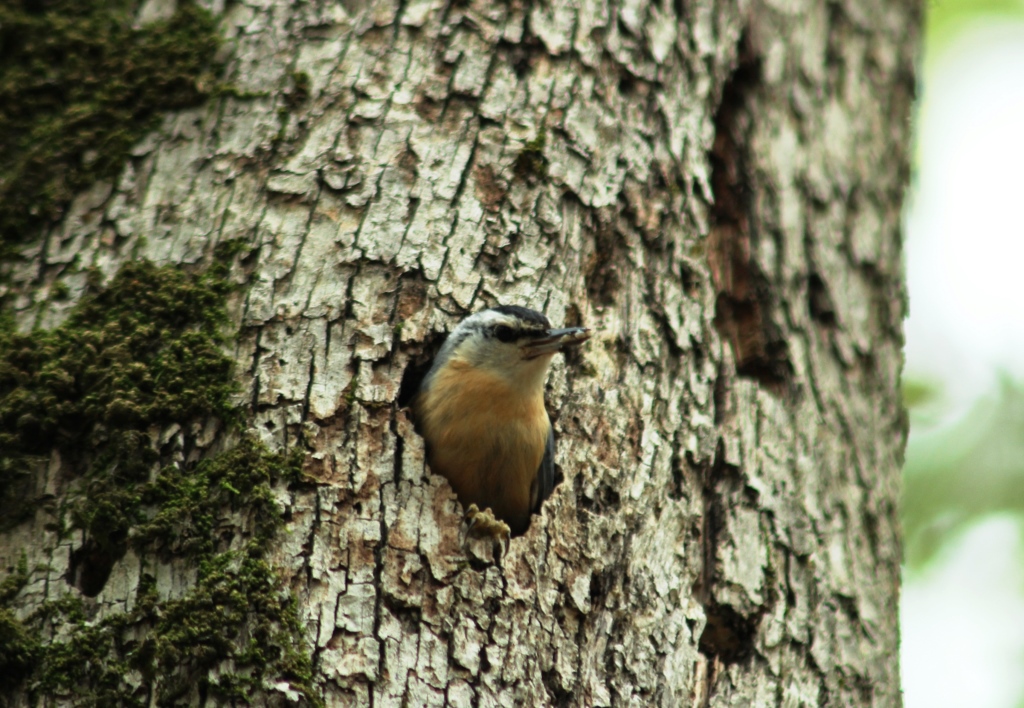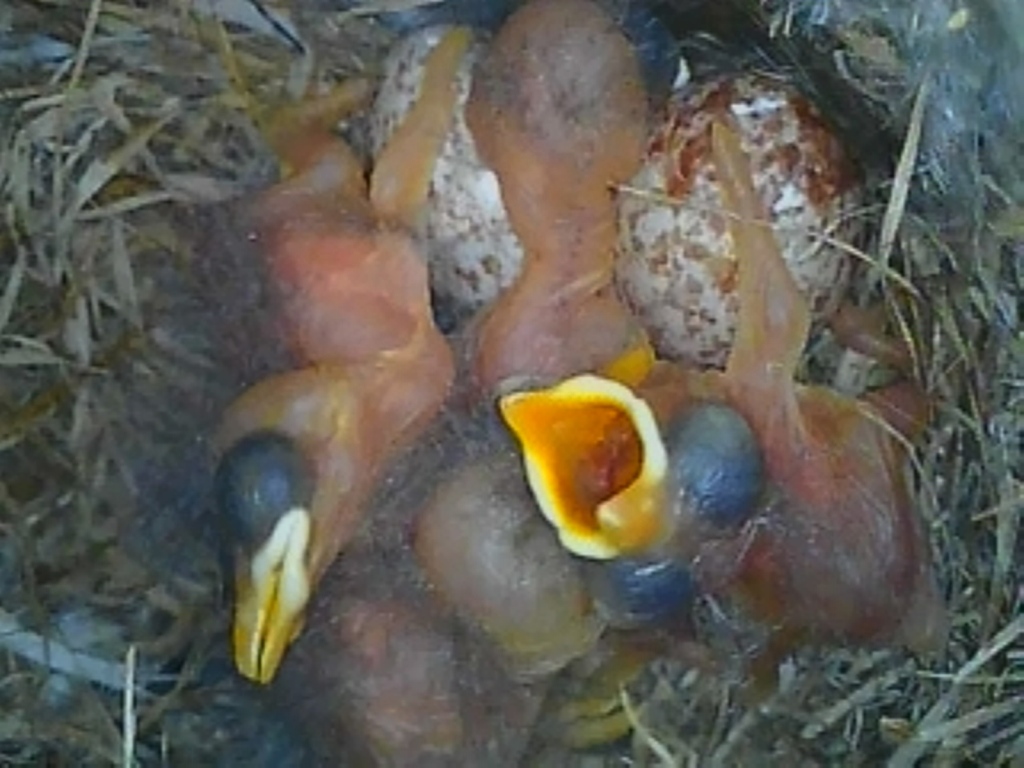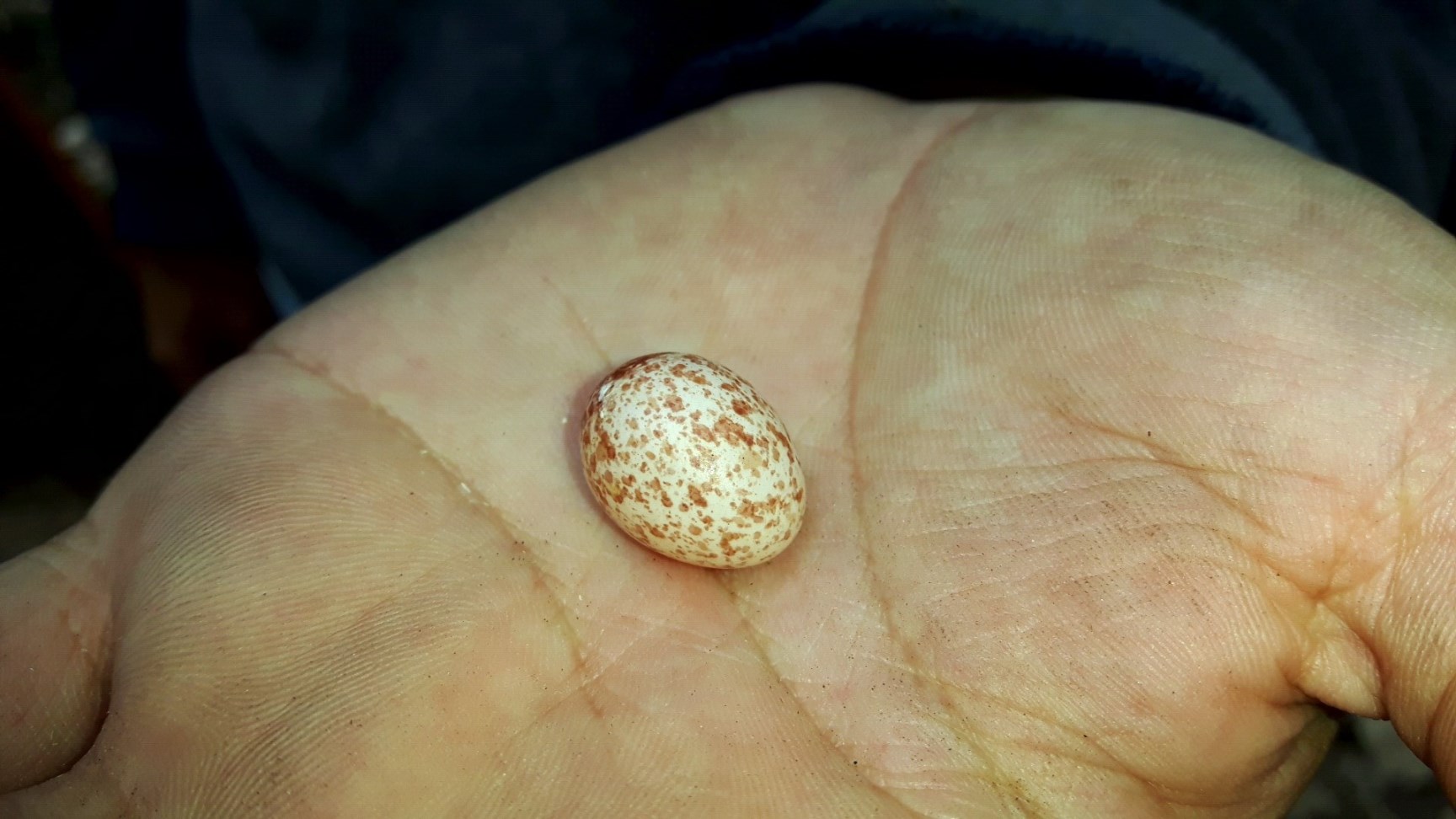The Algerian Nuthatch population has declined at one of its main breeding areas according to a study published recently. In this guest-blog, the lead author, Riadh Moulaï, shares with us the main results of the study.
En français, voir au dessus de la vidéo.

The Algerian Nuthatch (Sitta ledanti) is endemic to Algeria, and it’s found only in the old humid forests in the north of the country. Four sites are known for the species: Djebel Babor, Guerrouch Forest in Taza National Park, Tamentout Forest and Djimla Forest (BouAfroun forest). The four sites are relatively close to each other and are all located in the Kabylie of the Babors (Babor Mountains).
Data such as clutch description, clutch size, incubation period, duration of rearing of the young and fledging success remain hitherto unknown. The present study obtained new data about some of these breeding parameters.
The other main aim of the study focused on assessing population size of the Algeria Nuthatch at the Guerrouch Forest during the breeding season, by counting the number of territorial singing males and conducting a systematic search for nest sites. The results were then compared to population data collected in the early 1990s.
The surveys took place between April and the end of June 2016, in a section of the forest of about 300 hectares. In order to compare the results (see below), the researchers tried to locate their study area as precisely as possible on the same stations as those chosen in previous studies by Bellatreche (1994) and Doumandji & Kisserli (1993). Also as in previous studies, they choose to study at different forest types: Algerian oak (Quercus canariensis), Afares oak (Quercus afares) and mixed oak (Q. canariensis & Q. afares).
Decline in the Algerian Nuthatch population
The results showed a significant decline in the Algerian Nuthatch population at Guerrouch Forest compared to data from the early 1990s. Specifically, the study found a low population density: between 1 and 2 pairs per 10 hectares in the forest (depending on the oak forest type). This is a substantial decline when compared with the data collected in 1991 (between 2 and 3.1 pairs per 10 hectares, Bellatreche 1994) and in 1992 (3.35 pairs per 10 hectares, Doumandji & Kisserli 1993). The team counted only 18 birds in the surveyed forest (300 hectares), far below the number reported by Bellatreche & Chalabi (1990) of about 91 birds counted in an area of 800 hectares of the same forest.
This worrying decrease of the Algerian Nuthatch numbers, at least in the studied (western) part of the forest, was predictable according to the study. Several obvious signs of habitat degradation were noted: creation of tracks and development of a new road through the forest, hydraulic works and other deforestation activity. At this rate of forest fragmentation, the researchers can only be concerned about the continuity of the presence of the Algerian Nuthatch at this site. And in order to improve the situation, they presented several recommendations. On the positive side, they also noted that the largest forest area remains free of degradation.
Breeding biology
New data about the breeding biology of the species were obtained thanks to monitoring of a nest situated in an Algeria oak by an endoscopic camera. This enabled the description of the eggs of the Algerian Nuthatch for the first time. It also showed that the clutch size is of 6 eggs, the incubation time is estimated at 17 days and the nestling period is likely three weeks. In the Guerrouch forest, the breeding season is from late March to early June, and it does not appear that there is a second clutch.
Reference:
Moulaï R., Bouchareb A., Gheribi A. & Bougaham A. F. 2017. Statut de la population et biologie de la reproduction de la Sittelle Kabyle Sitta ledanti dans la forêt de Guerrouch (Algérie). Alauda 85 (2): 101-107.
Documentary:
The video below is a short documentary about the species and shows some parts of the study. It was realised with the collaboration of researchers of the Laboratory of Applied Zoology of the University of Bejaia and the Taza National Park (please watch until the end).
Photos 1-5 provided by the author.
Read also: New breeding site of the Algerian Nuthatch discovered in 2018.
Statut et biologie de la reproduction de la Sittelle Kabyle dans la forêt de Guerrouch
La Sittelle kabyle est une espèce endémique de l’Algérie, et elle est localisée dans les vieilles forêts humides du nord du pays. Quatre stations sont connues pour cette espèce : Djebel Babor, la forêt domaniale de Guerrouch, la forêt domaniale de Tamentout et la forêt de Djimla. Ces quatre sites sont tous localisés dans la Kabylie des Babors.
Des données comme la description des pontes, la taille de ponte, la durée d’incubation, la durée d’élevage des jeunes ou encore le succès de reproduction à l’envol restent jusqu’ici non connues.
C’est dans ce cadre que s’insère notre contribution qui a visé à évaluer l’effectif de la Sittelle kabyle de la forêt de Guerrouch dans le Parc national de Taza (Jijel, Algérie) en période de reproduction et cela en comparaison avec les données du début des années 90 du siècle dernier. Notre travail décrit aussi quelques paramètres de l’écologie de la reproduction de la Sittelle kabyle.
Un dénombrement des couples nicheurs est effectué dans différent stations de la forêt de Guerrouch: Chêne zéen (Quercus canariensis), Chêne afarès (Quercus afares) et Chêne mixte (Quercus canariensis & Quercus afares).
Les résultats obtenus montrent une baisse notable des effectifs par rapport aux données du début des années 90 du siècle dernier. Et ceci notamment à cause de la dégradation de l’habitat de la Sitelle kabyle suite aux activités humaines.
Des données inédites sont obtenues grâce au suivi par un camera endoscopique d’un nid établit sur un Chêne zéen. Les œufs de la Sittelle kabyle sont décrits pour la première fois. La taille de la ponte est de 6 œufs. La durée d’incubation des œufs est estimée à 17 jours et la durée de séjour au nid à probablement trois semaines. Dans la forêt de Guerrouch, la période de reproduction s’étale de fin mars à début juin, et il ne semble pas qu’il y’est une deuxième ponte.
Par le Prof. Riadh Moulaï
Laboratoire de Zoologie Appliquée et d’Ecophysiologie Animale,
Faculté des Sciences de la Nature et de la Vie,
Université de Bejaia (Algérie)
Référence:
Moulaï R., Bouchareb A., Gheribi A. & Bougaham A. F. 2017. Statut de la population et biologie de la reproduction de la Sittelle Kabyle Sitta ledanti dans la forêt de Guerrouch (Algérie). Alauda 85 (2): 101-107.
Documentaire:
La vidéo ci-dessous est un court documentaire sur l’espèce et montre certaines parties de l’étude. Il a été réalisé avec la collaboration de chercheurs du Laboratoire de Zoologie Appliquée de l’Université de Bejaia et du Parc National de Taza (veuillez regarder jusqu’à la fin).
Lire aussi: La découverte d’un nouveau site de reproduction de la Sittelle Kabyle en 2018.




Below is a beautiful photo by Djamel Hadj Aissa at Djimla, one of the stronghold of the species.
